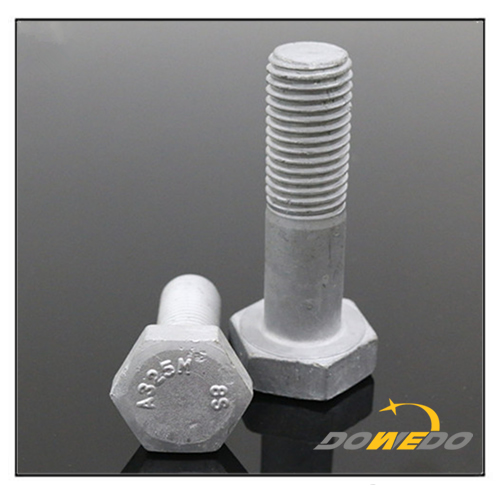High strength fasteners are conditioned according to technical requirements. Heat treatment quenching and tempering is to improve the comprehensive mechanical properties of fasteners to meet the required tensile strength and yield strength ratio of products. Heat treatment process has a vital impact on the internal quality of high-strength fasteners, especially its internal quality. Therefore, in order to produce high-quality high-strength fasteners, it is necessary to have advanced heat treatment technology and equipment. Because of the large production capacity, low price and relatively fine and precise structure of high strength bolts, heat treatment equipment is required to have the ability of large production capacity, high automation and good heat treatment quality.
Since 1990s, the continuous heat treatment production line with protective atmosphere has been dominant. The bottom-shaking type and mesh belt furnace are especially suitable for heat treatment and tempering of small and medium-sized fasteners. In addition to the good sealing performance of the furnace, the quenching and tempering line also has advanced functions such as computer control of atmosphere, temperature and process parameters, alarm and display of equipment failure.
High-strength fasteners are automatically controlled from feeding-cleaning-heating-quenching-cleaning-tempering-coloring to off-line operation, which effectively guarantees the quality of heat treatment. Decarbonization of threads will lead to the release of fasteners when they fail to meet the resistance requirements of mechanical properties, which will cause the failure of threaded fasteners and shorten their service life. Due to decarbonization of raw materials, improper annealing will deepen the decarbonization layer of raw materials. In the process of quenching and tempering heat treatment, some oxidizing gases are usually brought in from outside the furnace. The rust of bar steel wire or the residue on the surface of wire rod after cold drawing will also decompose after heating in furnace, and some oxidizing gases will be generated. For example, the surface rust of steel wire, which is composed of iron carbonate and hydroxide, will be decomposed into CO ramming and H ramming O after heating, thus aggravating decarburization. The results show that the decarbonization degree of medium carbon alloy steel is more serious than that of carbon steel, and the fastest decarbonization temperature is between 700 and 800 degrees Celsius. Because the attachment on the surface of steel wire decomposes into carbon dioxide and water rapidly under certain conditions, if the gas of continuous mesh belt furnace is not properly controlled, it will also cause excessive decarbonization of screw. When high strength bolts are formed by cold upsetting, the decarburization layer of raw materials and annealing not only still exists, but also is extruded to the top of the thread. For the surface of fasteners that need quenching, the required hardness can not be obtained, and the mechanical properties (especially strength and wear resistance) are reduced. In addition, the surface decarbonization of steel wire has different expansion coefficients with different surface and internal structures, and surface cracks may occur during quenching. Therefore, during quenching heating, it is necessary to protect the top of threads from decarbonization, and to cover the decarbonized fasteners properly. The advantage of protective atmosphere in mesh belt furnace should be adjusted to basically equal the original carbon content of the parts covered with carbon, so that the decarbonized fasteners can gradually recover to the original carbon content. The carbon potential should be set at 0.42%-0.48%. Carbon coating temperature and quenching heating are appropriate.
Similarly, it can not be carried out at high temperature, so as to avoid coarse grains and affect mechanical properties. The quality problems of fasteners during quenching and tempering are as follows: insufficient hardness in quenched state; uneven hardness in quenched state; excessive quenching deformation; quenching cracking. Such problems often occur in the field, which are related to raw materials, quenching heating and quenching cooling. Correct formulation of heat treatment process and standardization of production operation process can often avoid such quality accidents.

Heavy Hex Bolt A325 Bolt
Heavy Hex Bolt, Bolt and Fasteners, Stainless Steel Hex Bolts,Structural Bolt,High Quality Hexagon Bolts,High Stretch Structure Bolt Features of Heavy Hex Bolt A325 Bolt Model Number:ASTM A325 Standard:ASTM Material:Carbon Steel Grade:8S Finish:H.D.G. Certificate:ISO 9001:2008 Head type:Hex Head MOQ:900kgs/size Size:1/2″ to 1 1/2″ Packing:Bulk packed in 25kg cartons then into 900kgs pallet Material: carbon steel Surface treatments: plain, […]